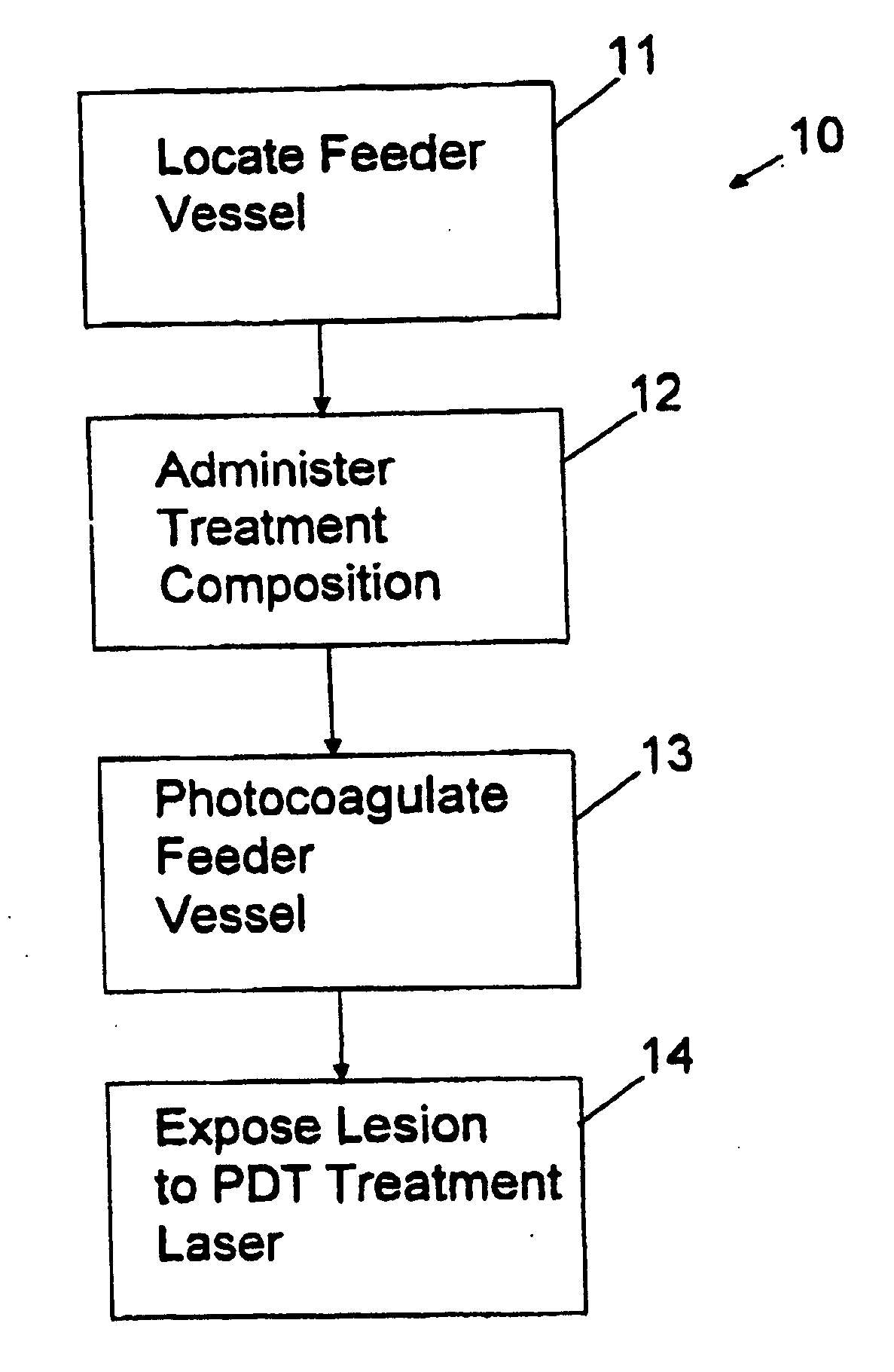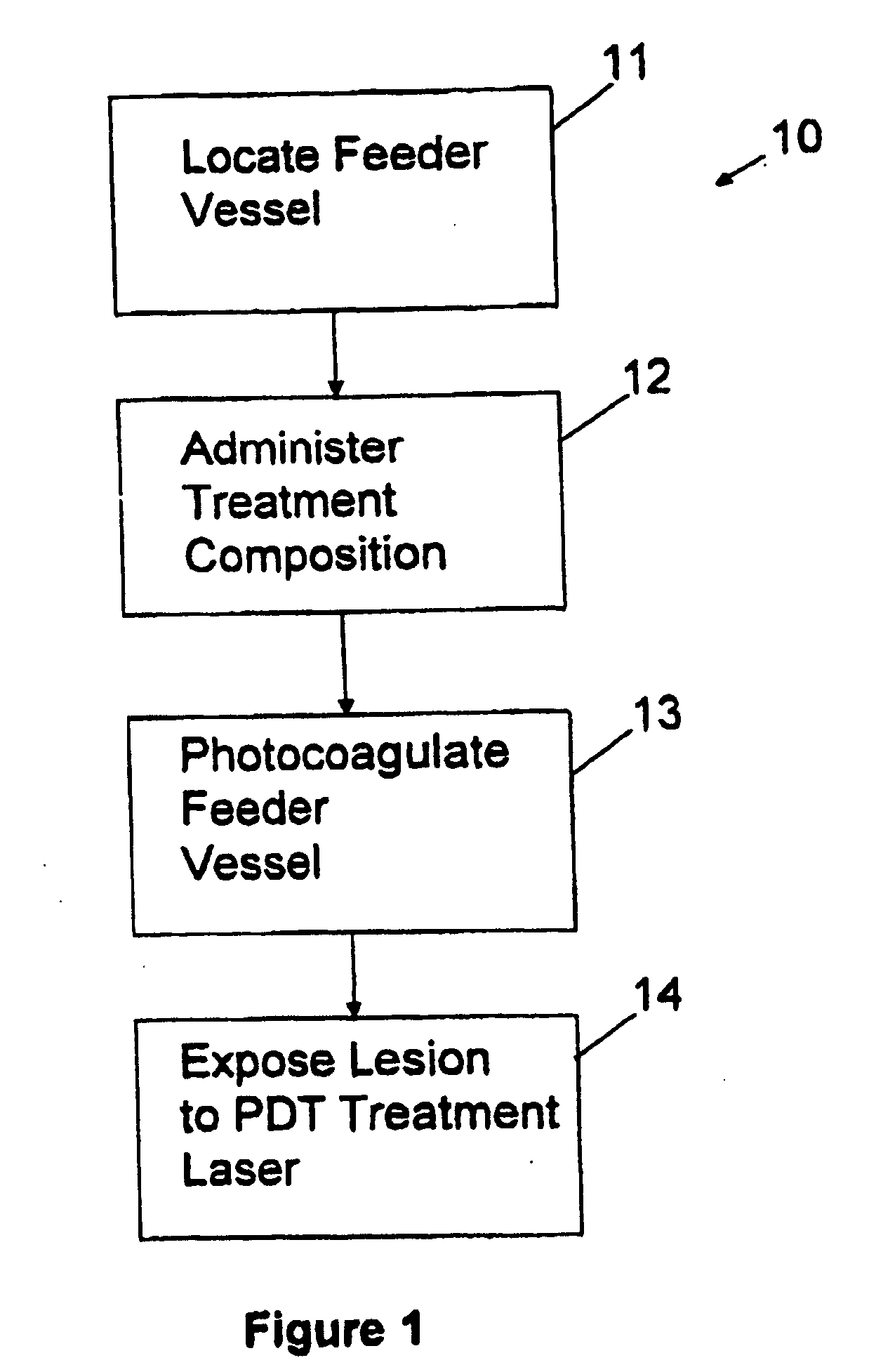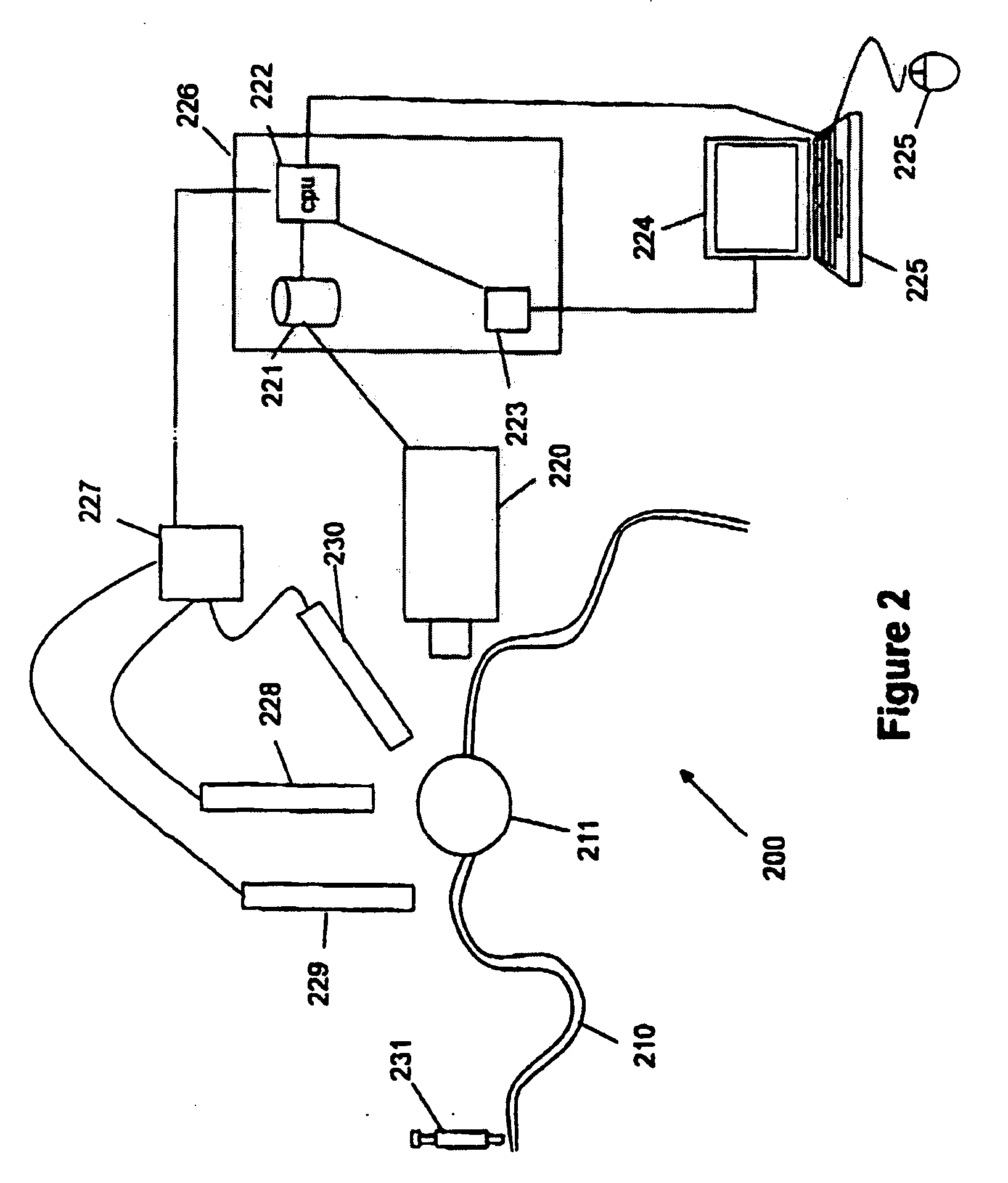Combined photocoagulation and photodynamic therapy
a combination of applied in the field of combined photocoagulation and photodynamic therapy, can solve the problems of photocoagulation of an entire cnv, affecting the treatment effect, so as to increase the concentration of pdt agent in the lesion, the effect of effective treatmen
- Summary
- Abstract
- Description
- Claims
- Application Information
AI Technical Summary
Benefits of technology
Problems solved by technology
Method used
Image
Examples
Embodiment Construction
[0024]In the following description, numerous specific details are set forth to provide a thorough understanding of the invention. However, it is understood that the invention may be practiced without these specific details. In other instances, well-known processes have not been described or shown in detail in order not to obscure the invention.
[0025]The methods of the present invention are claimed and described herein as a series of treatment steps. It should be understood that these methods and associated steps may be performed in any logical order that preserves the spirit of the invention. Moreover, the methods may be performed alone, or in conjunction with other procedures and treatments administered before, during or after such methods and steps set forth herein without departing from the scope and spirit of the invention. Further, it is contemplated that the term animals as used herein includes, but is not limited to, humans.
[0026]Achieving even more effective treatment of les...
PUM
 Login to View More
Login to View More Abstract
Description
Claims
Application Information
 Login to View More
Login to View More - R&D
- Intellectual Property
- Life Sciences
- Materials
- Tech Scout
- Unparalleled Data Quality
- Higher Quality Content
- 60% Fewer Hallucinations
Browse by: Latest US Patents, China's latest patents, Technical Efficacy Thesaurus, Application Domain, Technology Topic, Popular Technical Reports.
© 2025 PatSnap. All rights reserved.Legal|Privacy policy|Modern Slavery Act Transparency Statement|Sitemap|About US| Contact US: help@patsnap.com



